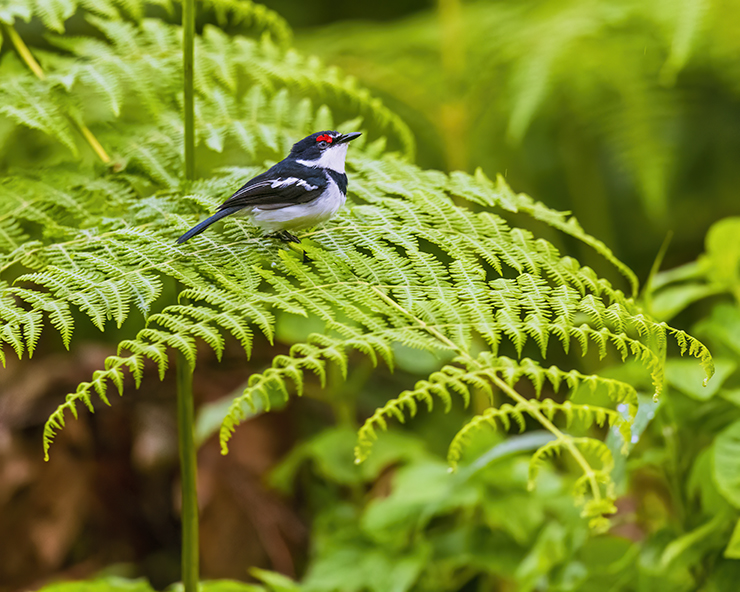PROTECT YOUR DNA WITH QUANTUM TECHNOLOGY
Orgo-Life the new way to the future Advertising by AdpathwayThe image of a pair of hummingbirds, a shimmering flash of color and energy, might lead you to believe they are a perfect match, flitting through life together. Monogamy is a common strategy among birds, but when it comes to hummingbirds, their love life is anything but conventional. The simple answer to the question is a resounding no. Their world is one of fleeting encounters, fierce competition, and solitary survival.
 Photo by Charles J. Sharp
Photo by Charles J. SharpThe Fast and the Fickle: A Solitary Existence
Unlike swans, geese, or eagles that form strong, lasting pair bonds, hummingbirds are almost entirely solitary creatures. From the moment they hatch, they operate as individuals. Their mothers raise them alone, and once the young are independent, they disperse to find their own territories.
For most of the year, a hummingbird’s world is centered around one thing: food. Most of their existence is a relentless pursuit of food due to their incredibly high metabolic rate, the highest of any vertebrate. Their unique ability to hover, which allows them to drink nectar from flowers, is extremely energy-intensive.
To fuel this demanding lifestyle, they must feed almost constantly, often consuming up to twice their body weight in nectar each day. This constant need for energy dictates their behavior, from their incredible spatial memory for finding and revisiting productive flowers to their aggressive territoriality in defending prime feeding resources.
When food is scarce or at night, they can enter a state of torpor, a hibernation-like state that drastically lowers their body temperature and metabolic activity to conserve energy and survive until they can feed again.
 Photo by Pete Gregoire
Photo by Pete GregoireThis solitary nature is a core reason they don’t mate for life. They are not built for companionship. A male hummingbird’s life is a constant show of dominance and display, while a female’s is an endless search for food and nesting sites. They only come together for one very specific purpose: breeding.
The Courting Ritual is a Dazzling but Brief Affair
The mating ritual of a hummingbird is a spectacular aerial ballet. Male hummingbirds, especially in species like the Ruby-throated Hummingbird, perform breathtaking courtship displays to attract females. This display can involve flying in a pendulum-like arc, sometimes diving from heights of over 60 feet. During these dives, their specialized tail feathers create a high-pitched sound that is part of their performance. The male’s goal is to impress a female with his physical prowess and the iridescence of his plumage.
 Photo by Marcial4
Photo by Marcial4If the female is impressed, she will mate with him. However, this is where the relationship ends. The male’s contribution is strictly limited to the act of fertilization. He plays no part in selecting a nest site, building the nest, or raising the young. His job, in his mind, is done. He will then move on to find and court other females, often mating with several in a single breeding season.
A Tough Job for a Tiny Bird
The female hummingbird is left to do all the work. She is a true single mother, performing every task from nest construction to chick rearing entirely on her own. The nest itself is an architectural marvel, a tiny, cup-shaped structure woven from spider silk, plant down, and bits of lichen. It is elastic and can stretch as the chicks grow.
She will then lay two tiny, pea-sized eggs and incubate them for about two weeks. Once they hatch, her work intensifies as she must constantly forage for nectar and insects to feed her rapidly growing young.
This solitary parenting is another key reason why they don’t mate for life. The female’s instinct is to provide for her offspring, and she doesn’t rely on a partner to help. A male’s presence could be a hindrance, as his territorial nature might attract predators to the nest.
 Photo by Charles J. Sharp
Photo by Charles J. SharpMating Strategies and Evolutionary Success
This mating strategy, where the male is promiscuous and the female is a solo parent, is known as polygyny. While it might seem chaotic or unromantic to us, it is a highly successful evolutionary strategy for hummingbirds. For the male, the goal is to mate with as many females as possible to pass on his genes. For the female, the goal is to secure the best genes for her offspring and then raise them in a safe environment, free from the distractions and dangers a male’s territorial behavior might bring.
The intense competition among males for breeding rights ensures that only the strongest, most vibrant, and most acrobatically skilled birds get to pass on their genetic material. This natural selection process drives the evolution of their dazzling plumage and incredible flight skills.
 Photo by Andy Morffew
Photo by Andy MorffewFinal Thoughts
So, while the idea of a hummingbird pair fluttering through life together is a charming one, the reality is far different. Their lives are a testament to the fact that monogamy isn’t the only path to success in the animal kingdom. The hummingbird’s story is one of fierce independence, brief but brilliant encounters, and a deep, solitary commitment to the survival of the next generation. It is no wonder then that they are always so busy!























 English (US) ·
English (US) ·  French (CA) ·
French (CA) ·